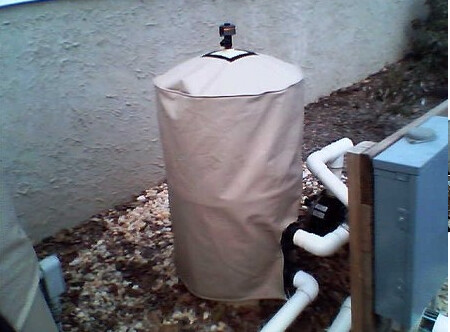My builder installed a motorized valve and has left me with this wiring... They simply wound the wire around the pipe and routed it over to the control box. Is this industry standard? I would have expected a conduit to come up below the valve and route to the control box through the bottom, but is that expecting too much? I can't imagine this will hold up very long in the Arizona sun.
Then this ground wire was just buried about 1/4" below the surface of yard which came up basically as soon as I lifted up just a little. I know a bare copper doesn't need conduit but this doesn't seem like it is to standard. What should I expect here so I know what is reasonable to ask for?
Then this ground wire was just buried about 1/4" below the surface of yard which came up basically as soon as I lifted up just a little. I know a bare copper doesn't need conduit but this doesn't seem like it is to standard. What should I expect here so I know what is reasonable to ask for?






